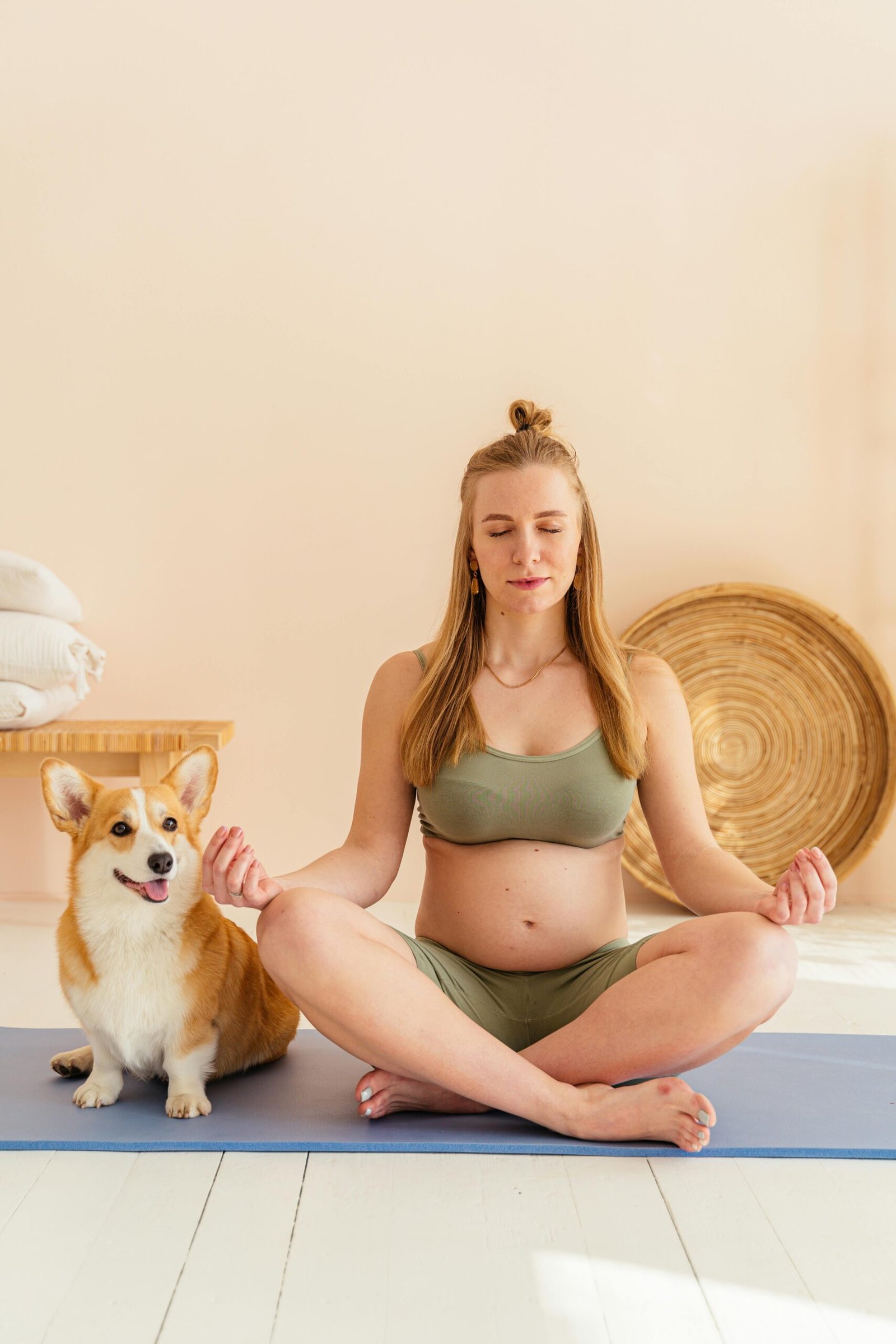
How to Relieve Stress in 10 Minutes with Guided Meditation
Stress is a common and inevitable part of life.
Stress is a word that we hear and use often, but what does it really mean?
Stress is the way our body and mind react to the challenges and demands of life.
Whether it’s caused by work, family, health, or other factors, stress can have negative effects on your physical and mental health.
It can cause headaches, insomnia, anxiety, depression, and even chronic diseases.
Stress can be positive or negative, depending on the situation and our perception of it.
Positive stress can motivate us, energize us, and help us perform better.
Negative stress can overwhelm us, drain us, and harm our health and well-being.
Stress affects us in different ways, depending on our personality, coping skills, and support system. Some people are more resilient and adaptable to stress, while others are more vulnerable and sensitive to stress.
Some people cope with stress in healthy and constructive ways, such as exercising, meditating, or talking to someone. Some people cope with stress in unhealthy and destructive ways, such as smoking, drinking, or overeating.
That’s why it’s important to find healthy ways to cope with stress and prevent it from taking over your life.
One of the most effective and easy ways to relieve stress is guided meditation.
Guided meditation is a form of meditation where you listen to a voice that guides you through a series of steps to relax your body and mind, and achieve a state of calmness and awareness.
Guided meditation can help you reduce stress, anxiety, and negative emotions, as well as improve your focus, mood, and well-being.
In this article, you will discover how to use guided meditation to relieve stress and enjoy a more peaceful and balanced life.
You will learn how to choose a guided meditation, how to prepare for a guided meditation session, how to follow a guided meditation script, and how to measure your progress and results.
By following the steps and tips in this article, you can start your own guided meditation practice today and enjoy the positive changes in your life.
I have shared a sample of guided meditation which is recorded in the voice of my mother. Who else’s voice will relax my turmoiled brain more than my creators’ voice.
I recommend you do the same. Your “person” can be your parent, your sibling, your teacher or your mentor.
How to Choose a Guided Meditation
There are many types and styles of guided meditation available online, such as apps, podcasts, videos, or audio files.
You can choose the one that suits your preferences and needs, depending on the length( can range from 10-30 minutes), topic, voice( as I said I prefer my mother’s voice, you can choose for yourself), music( depending upon your origin and sometimes religion), and language( self-explanatory) of the guided meditation.
Here are some tips to help you choose a guided meditation:
- Start With A Short And Simple Guided Meditation, especially if you are new to meditation or have a busy schedule. You can find guided meditations that last from 5 to 15 minutes, which are ideal for beginners or for a quick stress relief.
- Choose A Guided Meditation That Focuses On Stress Relief, Relaxation, Or Mindfulness. These are the most common and beneficial types of guided meditation for reducing stress and improving well-being. You can also choose a guided meditation that targets a specific problem or goal, such as anxiety, insomnia, self-esteem, or happiness.
- Choose A Guided Meditation That Has A Voice That You Like And Trust. The voice of the guide is very important, as it can affect your mood, attention, and comfort. You can try different voices and see which one resonates with you the most. I recommend your parent’s voice if they can record for you. Nothing better than that in this world!) You can also choose a guided meditation that has music or sounds that you enjoy and find soothing, such as nature sounds, ambient music, or binaural beats.
- Choose A Guided Meditation That Is In A Language That You Understand And Feel Comfortable With. If you are not fluent in the language of the guided meditation, you may miss some instructions or get distracted by the translation. You can also choose a guided meditation that has subtitles or transcripts, if available, to help you follow along.
How to Prepare for a Guided Meditation Session
Once you have chosen a guided meditation, you need to prepare yourself and your environment for a guided meditation session.
You should prepare for a guided meditation session:
- Find A Quiet And Comfortable Place where you won’t be disturbed, and set a timer for the duration of the guided meditation. You can sit or lie down in a comfortable position, and use a cushion, a blanket, or a pillow to support your body. You can also dim the lights, close the curtains, or light a candle to create a relaxing atmosphere.
- Turn Off Distractions: Turn off or silence your phone, computer, or any other device that may distract you or interrupt you during the guided meditation. You can also put on headphones or earphones to block out any external noise and to hear the guide’s voice more clearly.
- Relax Your Body And Mind Before Starting The Guided Meditation. You can do some stretches, take some deep breaths, or drink some water to loosen up and hydrate yourself. You can also set an intention or a goal for your guided meditation, such as “I want to feel calm and peaceful” or “I want to let go of stress and tension”.
- Start The Guided Meditation And Follow The Guide’s Voice And Instructions. Try to be open and receptive to the guided meditation, and don’t worry about doing it right or wrong. Just listen and follow along as best as you can.
How to Follow a Guided Meditation Script
A guided meditation script is a written or spoken text that guides you through a meditation session.
It usually consists of an introduction, a body, and a conclusion.
( I have shared a sample text in the end of this article which I use for myself)
The introduction explains the purpose and benefits of the meditation, and how long it will take. This is to prepare your body and mind for the process.
The body guides you to focus on your breath, body, and sensations, and to notice and release any thoughts or feelings that arise. This is the main part.
The conclusion brings you back to the present moment and expresses gratitude and encouragement.
Here are some tips to help you follow a guided meditation script:
- Use a calm, soothing, and friendly voice that speaks slowly and clearly. I usually suggest my subscribers to ask their parent, sibling, teacher or mentor to do this. That’s what will penetrate your subconcious where we actually want top work.
If you are reading the script yourself, you can record your voice and play it back during the meditation session. That also works for someone as a few subscribers reported that listening their own voice felt as if you were being guided by your subconcious itself. If this works for you, you can speak it yourself. Record and listen later.
If you are listening to someone else’s voice, you can adjust the volume and speed to your liking.
- Use simple and positive language that avoids jargon, commands, or judgments. For example, instead of saying “Don’t think about anything”, you can say “Let your thoughts come and go”. Instead of saying “You are doing great”, you can say “You are doing your best”.
- Use sensory imagery and metaphors that appeal to the listener’s imagination and emotions. For example, you can say “Imagine that you are breathing in a warm and soothing light that fills your body with relaxation and peace” or “Feel your body sinking into the ground, like a feather landing on a soft pillow”.
- Use the present tense and the second person (“you”) to create a sense of immediacy and connection. For example, you can say “You are now feeling more calm and relaxed” or “You are now aware of your breath and your body”.
- Guide the listener( yourself) to focus on their breath, body, and sensations, and to notice and release any thoughts or feelings that arise. For example, you can say “Bring your attention to your breath, and notice how it flows in and out of your nostrils” or “As you breathe, scan your body from head to toe, and notice any sensations that you feel”. You can also say “If you notice any thoughts or feelings, just acknowledge them and let them go, without judging them or holding on to them”.
- Use cues and reminders to help yourself, the listener, stay focused and relaxed throughout the meditation. For example, you can say “If your mind wanders, gently bring it back to your breath” or “If you feel any tension or discomfort, gently adjust your position or breathe into it”.
- End with a gentle and gradual transition that brings the listener back to the present moment and expresses gratitude and encouragement. For example, you can say “Slowly and gently, bring your attention back to your surroundings, and open your eyes if they were closed” or “Take a moment to appreciate yourself for taking the time to do this meditation, and to thank yourself for being who you are”.
How to Measure Your Progress and Results
One of the benefits of guided meditation is that you can measure your progress and results by observing how you feel and how you behave before and after the meditation session.
Some tools and methods to track and quantify your progress and results are:
- Use a journal or a notebook to record your thoughts, feelings, and experiences during and after the guided meditation session. You can write down what you liked or disliked about the guided meditation, what you learned or discovered, and how you felt or changed. You can also rate your stress level, mood, and well-being on a scale of 1 to 10, before and after the meditation session, and compare the results over time.
- Use an app or a device to monitor your physiological and psychological indicators, such as your heart rate, blood pressure, brain waves, and cortisol levels, before and after the guided meditation session. You can also use an app or a device to measure your meditation performance, such as your attention, focus, and relaxation levels, during the guided meditation session. You can use these data to see how guided meditation affects your body and mind, and to improve your meditation skills and habits.
- Use a survey or a questionnaire to get feedback from others, such as your friends, family, or colleagues, on how they perceive your stress level, mood, and well-being, before and after the guided meditation session. You can also ask them how they feel about your communication, behavior, and attitude, before and after the guided meditation session. You can use this feedback to see how guided meditation affects your relationships and interactions with others, and to enhance your social and emotional skills.
Sample
(This is exactly what I have in my Cellphone. My mom read it in the most divine possible way and I listen to it almost every day.)
Hello my son!
Welcome to this guided meditation session to help you relieve your stress. I am sure you had a long busy day and you want your mother to put her hand on your head and put you to sleep. This session will help you with that. My blessings are always there with you my child.
In this meditation, I will teach you how to relax your body and mind, and let go of any stress or tension that you may be feeling.
This meditation will take about 10 minutes.
All you need to do is to find a quiet place where you won’t be disturbed and sit or lie down in a comfortable and safe position.
You can close your eyes, but please don’t sleep.
Listen to my voice and follow the instructions.
Are you ready my son?
Now, let’s begin.
Take a deep breath in through your nose, and exhale slowly through your nose again.
Keep your mouth closed.
Relax your tense body starting from head to toe or toe to head.
Repeat this a few more times, and feel your body and mind becoming more relaxed with each breath.
Now, my son, bring your attention to your feet, and notice how they feel.
Are they warm or cold, tense or relaxed, heavy or light?
Whatever you feel, just observe it.
Don’t analyze anything.
Now, imagine that you are breathing in a warm and soothing air that fills your feet with relaxation and peace.
Don’t hold your breath!
As you breathe out, imagine that you are releasing any stress or tension that you may have had in your feet.
Feel the fatigue flowing out of your body as you exhale.
Feel your feet becoming more relaxed and comfortable with each breath.
Now, move your attention to your lower legs, and repeat the same process.
Breathe in the warm and soothing air, and breathe out any stress or tension.
Feel your lower legs becoming more relaxed and comfortable with each breath.
Now, move your attention to your upper legs, and do the same. Breathe in the warm and soothing air, and breathe out any stress or tension.
Feel your upper legs becoming more relaxed and comfortable with each breath.
Continue this process with the rest of your body parts, moving up from your hips, to your lower back, to your upper back, to your chest, to your stomach, to your shoulders, to your arms, to your hands, to your neck, to your face, and to your head.
Take your time, and don’t rush.
Breathe in the warm and soothing air, and breathe out any stress or tension. Feel your whole body becoming more relaxed and comfortable with each breath.
Now, bring your attention to your heart, and notice how it feels.
Are you feeling any emotions, such as joy, sadness, anger, or fear?
Whatever you feel, just observe it.
Don’t analyze anything.
Now, imagine that you are breathing in a warm and soothing air that fills your heart with love and compassion.
As you breathe out, imagine that you are releasing any stress or tension that you may have in your heart.
Feel your heart becoming more relaxed and comfortable with each breath.
Now, bring your attention to your mind, and notice how it feels.
Are you having any thoughts, such as memories, plans, worries, or fantasies?
Whatever you think, just observe it.
Don’t analyze anything.
Now, imagine that you are breathing in a warm and soothing air that fills your mind with clarity and wisdom. As you breathe out, imagine that you are releasing any stress or tension that you may have in your mind.
Feel your mind becoming more relaxed and comfortable with each breath.
Now, bring your attention to your whole being, and notice how it feels. Are you feeling more calm, peaceful, and aware?
Whatever you feel, just observe it.
Don’t analyze anything.
Now, imagine that you are breathing in a warm and soothing air that fills your whole being with harmony and balance. As you breathe out, imagine that you are releasing any stress or tension that you may have in your whole being. Feel your whole being becoming more relaxed and comfortable with each breath.
Now, take a moment to appreciate yourself for taking the time to do this meditation, and to thank yourself for being who you are.
You, my son, are a wonderful and unique person, and you deserve to be happy and healthy.
You have the power to cope with any challenges that life may bring, and to create the life that you want.
You are not alone my child, you are connected to me always, to the source of all life, and you are supported by the universe.
Now, slowly and gently, bring your attention back to your surroundings.
Rub your palms against each other , if your hands are not warm.
Put your hands on your eyes and open your eyes, slowly.
Notice how you feel, and take a moment to stretch your body if you need to.
You have completed this guided meditation for stress relief.
I hope you enjoyed it, my son. I pray to the Universe to give its all blessings to you.
We will meet again soon, my son.
Thank you for listening, and goodbye.
I love you.
Let’s do it then!
Guided meditation is a simple and effective way to relieve stress and improve your well-being.
By following the steps and tips in this article, you can start your own guided meditation practice today and enjoy the positive changes in your life. Guided meditation can help you lower your blood pressure, improve your mood, and boost your immune system. It can also help you cope with anxiety, depression, and other mental health issues. It can also help you increase your focus, creativity, and productivity. It can also help you develop your self-awareness, self-compassion, and self-confidence.
I wish you all a stress free life so that you can enjoy your life with your family and friends in the best possible way.







